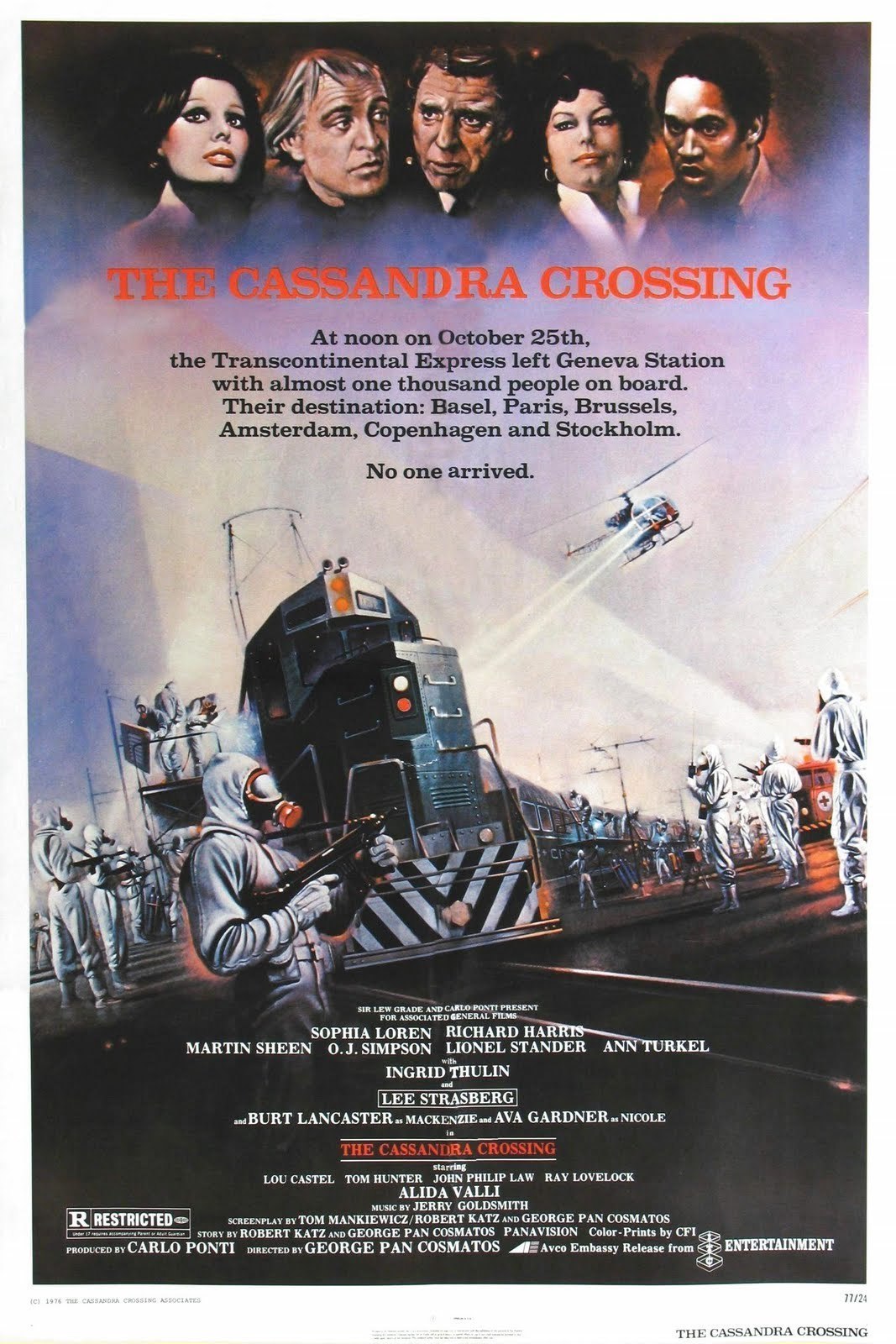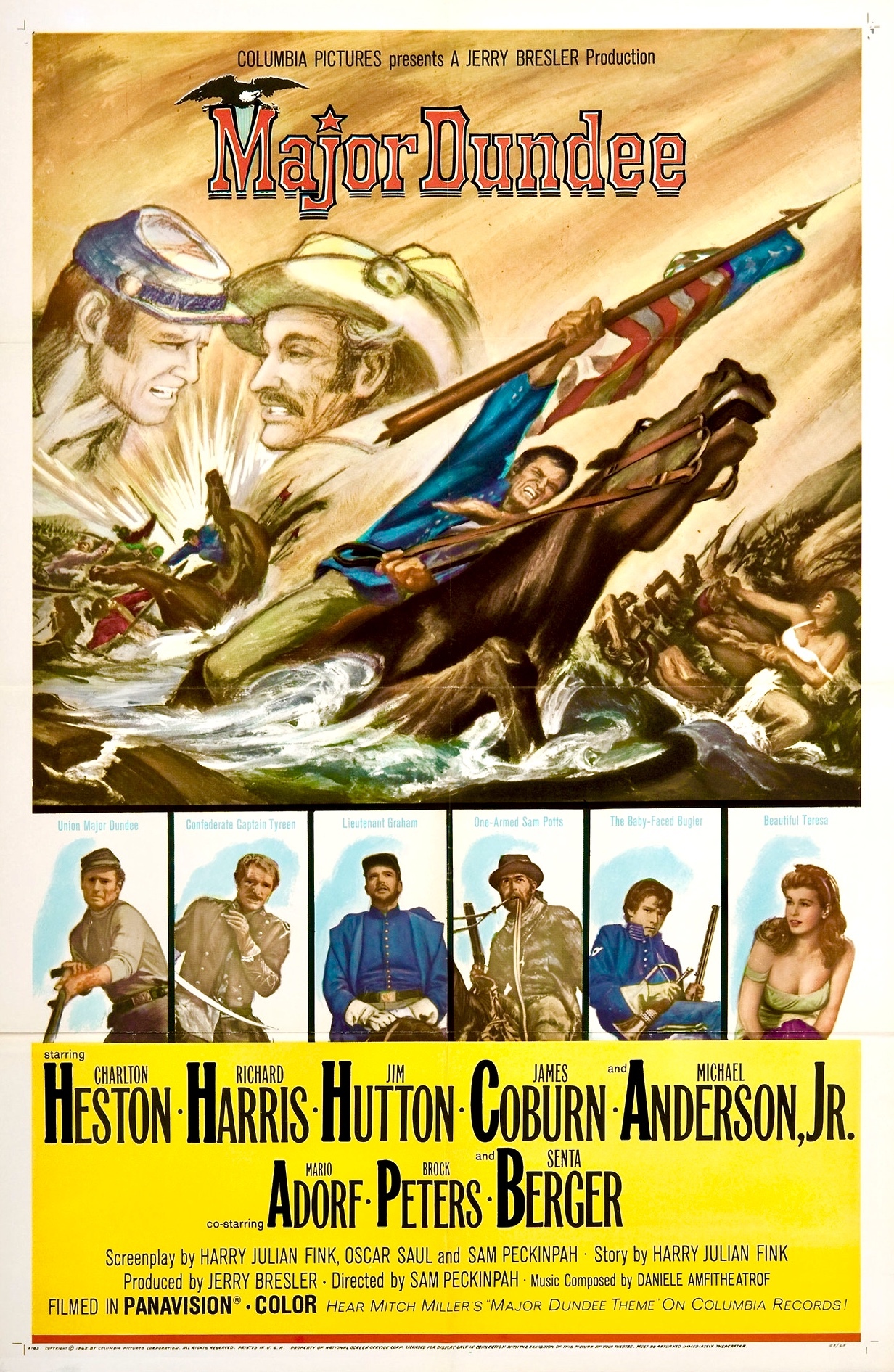
The Cassandra Crossing which is one of those star-studded disaster movies that was so popular in the 1970s. It is about how an eco-terrorist accidentally contaminates himself with a deadly virus and then boards a train. Once the government learns what’s happened they seal up the train and make sure no one can get off. They reroute it to Poland where they will be quarantined until a cure is found. To get there they have to cross a disused and likely hazardous bridge called the Cassandra Crossing.
Richard Harris plays a neurologist who just happens to be a passenger on the train and becomes the defacto hero. Burt Lancaster is the government, military guy back at the base barking all the orders to keep everybody aboard. The cast also includes Sophia Loren as the neurologist’s wife, Ava Gardner as the wife of an arms dealer, Martin Sheen as her plaything, OJ Simpson as the world’s worst priest, and Lee Strasberg as a Jew who is none too keen to be returning to Poland (apparently the train is going to quarantine them at an old concentration camp.
That’s a good cast and the basics of the story are interesting, but like so many of these star-studded disaster movies it spends too much time giving each actor a good scene or two, and not enough making me care. Or at least be thrilled by the suspense.
It is confusing, too, I’m not 100 percent sure they were headed towards the concentration camp. Wikipedia says so, and Strasberg’s character has a nervous breakdown, but I didn’t hear any dialogue expressly stating that was their destination. I’m not really sure why they have to go to Poland anyway. The train was originally a Geneva to Stockholm exchange. It seems like they could just park it somewhere relatively isolated, board it up, and wait until the doctors figure things out. A lot of the plot is like that – confusing.
The actors, for the most part, seem to be having fun, and I always like watching lots of cool actors in a film together. But I wish they’d tightened things up a bit and concentrated on making this thing as tense as possible. Instead, it is a bit of a bloated mess.
Things do get a little exciting toward the end when our heroes do battle with the military goons in order to stop the train before it pummels off the bridge and it’s got one of those terrifically bleak endings. But it takes far too long to get there to make this a recommendation.

